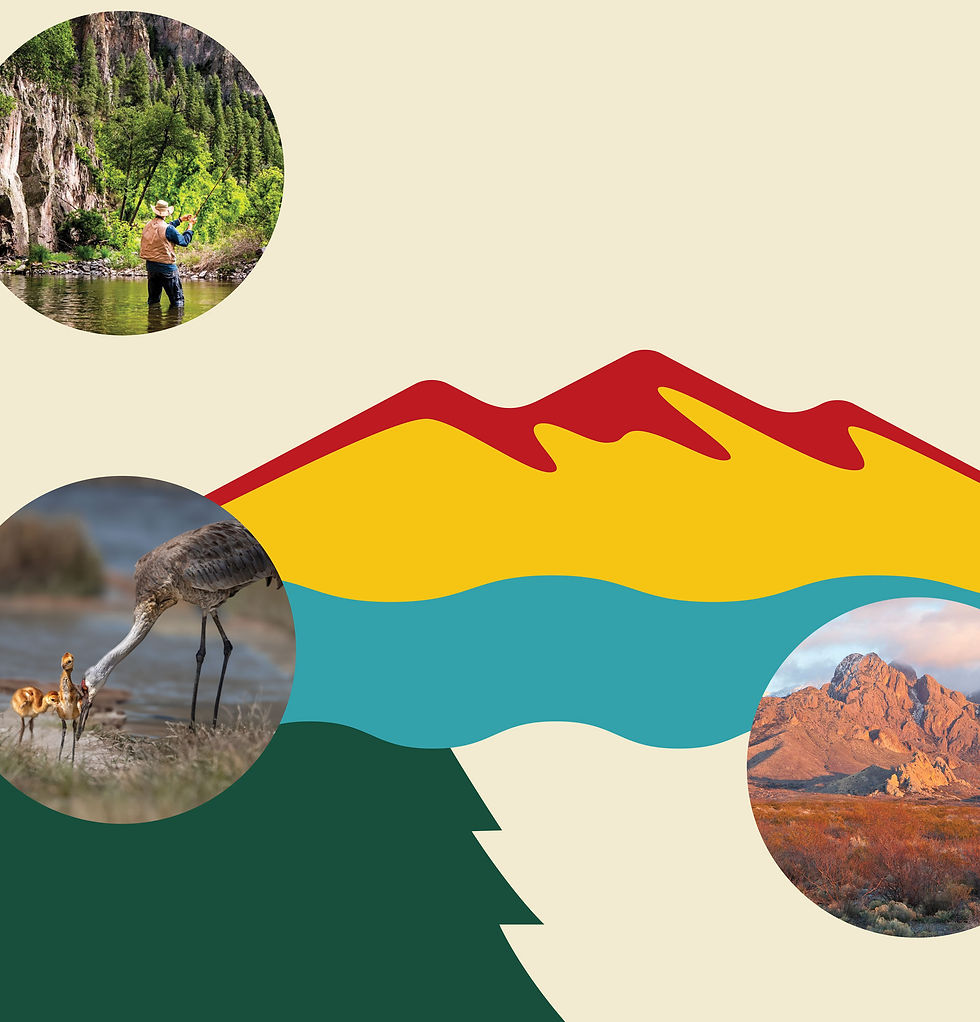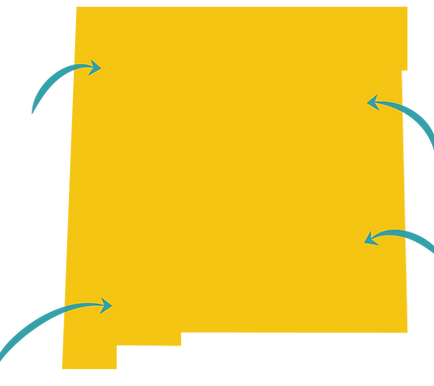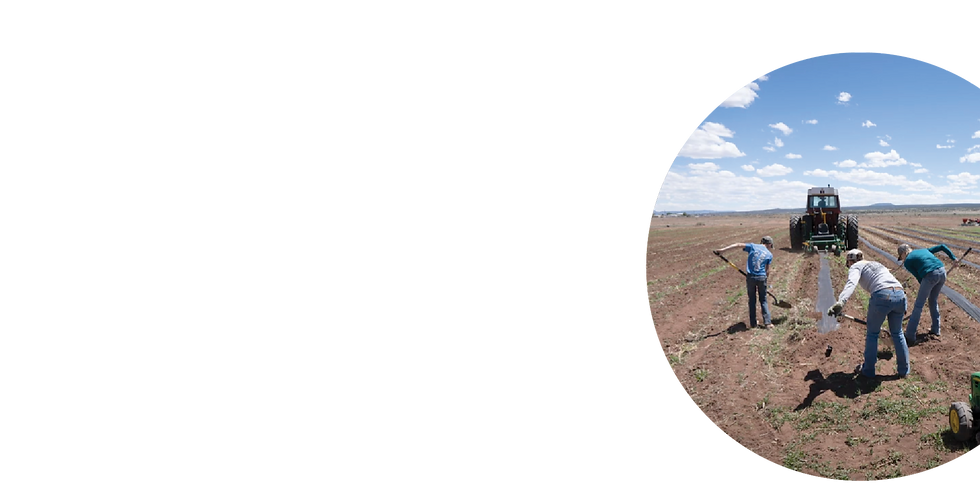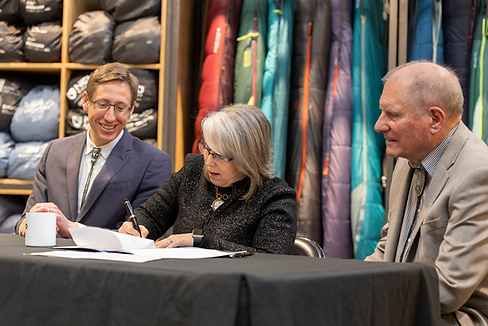
Executive Summary
The Land of Enchantment Legacy Fund (Legacy Fund) is New Mexico’s first state funding source for conservation - prioritizing land and water stewardship, forest and watershed health, outdoor recreation and infrastructure, agriculture and working lands, historic preservation and wildlife species protection. It provides funding for existing state programs that were never funded or funded sporadically in the past, using distributions from the $350 million Conservation Legacy Permanent Fund (Legacy Permanent Fund). Approximately $12.5 million is being delivered to New Mexico communities each year through ten existing programs across six state agencies. The Legacy Fund’s first fiscal year (FY25) began on July 1, 2024 and ended on June 30, 2025. This report highlights the first year successes, challenges and opportunities.
Key Figures
100%
Of the $12.5 million has been allocated in FY25
185
individual projects
93%
of N.M. counties are receiving funding for on-the-ground projects
80%
of projects in rural areas vs. 20% in urban areas
100%
of Legacy Fund programs are leveraging federal matching dollars
$5+
Million
in matching dollars is from local, federal and private sources
All 33
Counties
have wildlife survey projects happening locally
$50+
Million
was requested from local communities for the $12.5 million available
10
Tribal communities are benefitting from Legacy Fund programs, including 4 high schools who serve Tribal students specifically


FY 25 Highlights
120
estimated jobs are being created by the Trails+ Grant Program

$1 million
was distributed to restore historical properties in Albuquerque, Santa Fe, Silver City, Deming and the Dinetah region by the N.M. Dept. of Cultural Affairs.
64,905 acres
of public and private land are being improved by Legacy Fund programs
23,128 acres
are being treated to stop the spread of invasive plant species through NMDA’s Noxious Weed Program
46
Soil & Water Conservation Districts projects are being funded by NMDA
10,751
of agricultural land are being
improved thanks to NMDA’s
Healthy Soil Program
460
acres of wetlands & riparian habitat + 33 miles of creeks/streams are being protected by NMED's River Stewardship Program
34 wildlife species
are the focus of habitat improvement by the N.M. Dept. of Game & Fish
40,348
forest & watershed acres are targeted for treatment through EMNRD’s Forestry Division
7,735
N.M. youth are being served by the Outdoor Equity Fund

Strong Demand from
New Mexico Communities
Legacy Fund Program | Amount Allocated | Amount Requested | Projects Funded | Applications Received |
|---|---|---|---|---|
NMDA Healthy Soil Program | $670,000 | $1,913,000 | 39 | 88 |
NMDA SWCDs | $1,040,000 | $3,500,000 | 31 | 57 |
NMED River Stewardship | $1,250,000 | $10,500,000 | 7 | 18 |
DCA Cultural Properties Restoration Fund | $1,000,000 | $6,000,000 | 5 | 32 |
EDD Outdoor Equity Fund | $468,000 | $4,200,000 | ||
EDD Trails+ Grant Programs | $1,410,000 | $10,000,000 |
*Includes projects funded specifically by Legacy Fund dollars in FY25. Additional projects were funded by these programs in FY25 using different funding sources.
Sample of FY25 Matching Funds
Noxious Weeds
NMDA
$66,000
Health Soil
NMDA
$490,000
NHCA
EMNRD
$230,000
River Stewardship
NMED
$731,913
Cultural Properties
DCA
$1,302,591.10
Outdoor Equity Fund
EDD
$1,479,498.07
Trails+ Grants Program
EDD
$1,500,00.00

Key Takeaways
The Legacy Fund
is meeting &
exceeding its goals.
There is strong demand for funding from all 33 counties and from Tribal communities.
Over $50+ million was requested from local communities for the $12.5 million available in FY25.
The Legacy Fund is
serving its purpose as a matching fund.
More than $5 million in local, federal and private funding is being leveraged by the $12.5 million available in FY25.
100% of Legacy Fund programs are leveraging some form of federal matching dollars.
The Legacy Permanent Fund is working as an investment tool.
The Permanent Fund is
seeing higher than
expected interest returns.
All programs will receive increased disbursements
in FY26.
The Legacy Fund is a job creator.
20 NGOs, subcontractors and engineers support NMED’s River Stewardship Program; 90% of them are from N.M.
120 jobs are being created by the Trails+ Grant program in FY25.
The Legacy Fund is encouraging cross-agency collaboration.
Agencies like NMDA are using funds to match other federally-funded programs under different agencies like EMNRD for noxious weeds management and forestry/invasive plant programs.
NMED and the NM Dept. of Game & Fish are also working together on watershed restoration projects that support fish and wildlife.
Other agencies, such as the State Land Office and the N.M. Office of Natural Resource Trustee, are also collaborating on Legacy Fund projects.
The Legacy Fund is encouraging cross-agency collaboration.
Agencies like NMDA are using funds to match other federally-funded programs under different agencies like EMNRD for noxious weeds management and forestry/invasive plant programs.
NMED and the NM Dept. of Game & Fish are also working together on watershed restoration projects that support fish and wildlife.
Other agencies, such as the State Land Office and the N.M. Office of Natural Resource Trustee, are also collaborating on Legacy Fund projects.
The Legacy Fund is encouraging cross-agency collaboration.
Agencies like NMDA are using funds to match other federally-funded programs under different agencies like EMNRD for noxious weeds management and forestry/invasive plant programs.
NMED and the N.M. Dept. of Game & Fish are also working together on watershed restoration projects that support fish and wildlife.
Other agencies, such as the State Land Office and the N.M. Office of Natural Resource Trustee, are also collaborating on Legacy Fund projects.
The Legacy Fund is bringing conservation-minded people together.
NMED’s River Stewardship Program is developing successful partnerships with cattle ranchers and grazing permittees to protect critical watersheds.
Other programs involve schools, faith communities, small businesses, private foundations, etc.
The Legacy Fund is supporting rural communities
80% of projects funded in FY25 are in rural areas vs. 20% in urban areas.
Challenges
Time restraints are impacting some grant applications and distributions.
Some programs, like NMED’s River Stewardship Program, have a deadline of two years to complete a grant. Projects for river and wetland restoration often need additional time beyond this limit to contract and execute the grant.
Programs continue to need additional funding streams higher than what the Legacy Fund can provide.
The Legacy Fund was intended to provide a baseline of recurring seed money to all programs, but was not intended to meet each program’s annual needs.
Demand from N.M. communities is outpacing available Legacy Fund dollars.
Every single program received more applications than funding available - some even 5x and 10x more. This represents pent-up demand from decades of little-to-no funding.
Tribes, Pueblos and Nations are eligible for most, but not all, Legacy Fund Programs
Because of the underlying statute, Tribes are not directly eligible for the Cultural Properties Restoration Fund (CPRF), but the N.M. Dept. of Cultural Affairs has worked hard to support projects in Tribal communities in partnership with political subdivisions of the state.
Federal funding freezes are causing uncertainty, confusion and frustration at state agencies.
Many Legacy Fund grants were disrupted by federal agency changes in FY25.
Because 100% of Legacy Fund Programs leveraged some sort of federal match, every single state agency faced challenges in FY25. While most grants are secure, some still face uncertainty.
Programs needed lead time and staff to establish themselves in the first year.
For programs that received little-to-no funding historically, dedicated staff did not exist to manage the grants. As a result, agencies needed time to organize or hire staff to manage funds, which delayed the RFP process for some programs in the first fiscal year.
Examples include NMDA’s Noxious Weeds Program, EMNRD’s Natural Heritage Conservation Act and DCA’s Cultural Properties Restoration Fund.
Today, all programs have at least one person dedicated to managing Legacy Fund program grants, and staff are applying their lessons learned to support funding allocations in FY26.
Opportunities
Continued growth and interest from the Legacy Permanent Fund is expected, which could increase the annual distributions to each program.
The Legacy Fund could meet $50 million in annual demand from N.M. communities each year.
Additional, targeted outreach could result in more funding being delivered to Tribes, Pueblos and Nations.

Summary & Highlights: FY25
Forest & Watershed Health
EMNRD - FAWRA
9 projects on state lands in and around the:
Santa Fe Fireshed
Middle Rio Grande Bosque
Cimarron Watershed
Sangre de Cristo Mountains
Carson & Gila National Forests
L Bar/Marquez Wildlife Management Area
NMED - River Stewardship Program
7 river restoration projects:
Wetland restoration in Catron County
Watershed quality improvements in the Upper Gila Watershed in Sierra County
Restoration of the Cimarron Watershed
Trout habitat improvements in the Rio Embudo and Rio Chama in Rio Arriba County
Beaver habitat restoration on the Rio Puerco in Sandoval County
Wetland improvements in Albuquerque’s South Valley at the Valle de Oro National Wildlife Refuge
20 NGOs, subcontractors and engineers support NMED’s River Stewardship Program; 90% of them are from N.M.

Farming, Ranching & Agricultural Heritage
EMNRD - NHCA
4 projects supporting conservation easements in:
Mora County
Santa Fe County
Socorro County
An 100-acre conservation easement located between Nambe and Pojoaque pueblos will support a fourth-generation farm with acequia water rights, protect wildlife habitat and allow public viewing of that habitat from a bike path
NMDA - Healthy Soil Program
39 grants to improve agricultural lands, benefiting more than 30 private landowners and acequia associations, including
The Chimayó Cultural Preservation Association to improve soil health on four parcels of Plaza del Cerro
NMDA - District Opportunities Grant
31 projects are supporting 23 Soil & Water Conservation & Watershed Districts, including:
Improvements to a 120-acre nature area in Socorro for public and recreational use.
NMDA - Noxious Weeds
15 projects across 14 counties, including:
Treatment of a 45-acre area in Taos that includes a public park, open space and acequia lands, with support from seasonal youth crews

Outdoor Recreation & Infrastructure
7,735 N.M. youth are being served by the Outdoor Equity Fund
120 estimated jobs are being created by ORD’s Trails+ Grant Program
Youth Conservation Corps (YCC) employing N.M. youth are active in many Legacy Fund programs, teaching N.M. valuable job-training skills and inspiring careers in conservation
EDD – Outdoor Equity Fund
22 projects supporting 7,735 N.M. youth activities including:
Boating and water skiing
Bird watching and wildlife photography
Horseback riding
Recording petroglyphs
Hunting and Fishing
Tipi camping
4 projects serve Tribal students specifically
EDD – Trails+ Grant Program
4 projects supporting infrastructure improvements, including
Restoring 326 miles of wildfire-damaged trails in the Carson, Santa Fe, and Gila National Forests
Improving a popular recreation trail along the Pecos River in Carlsbad
Improving pedestrian and cycling crossings in Albuquerque
Building infrastructure at the 370-acre Ned Houk Park in Clovis
Wildlife Habitat Restoration
N.M. Dept of Game & Fish
43 projects supporting 34 wildlife species, including N.M.'s Species of Greatest Conservation Need (SGCN)
All 33 N.M. counties have wildlife survey projects happening locally
One educational project with high school students at Dora High School in Portales and Tatum High School focuses on habitat for the lesser prairie-chicken
Historic Preservation
DCA - Cultural Properties Restoration Fund (CPRF)
For the first time in decades, this program funded 5 projects to restore historic and cultural properties
Silver City’s only surviving 19th century stone building
The oldest fire station in Albuquerque
The original city hall in Santa Fe
A 1916 national guard armory in Deming
Four Bee Holdzil (Navajo defensive
structures) in the Dinetah region

Background
The Land of Enchantment Legacy Fund was established by the passage of Senate Bill 9, which was sponsored by Senate Majority Leader Peter Wirth, retired Senator Steven Neville and House Appropriations Chairman Nathan Small. It was created and championed by Gov. Michelle Lujan Grisham who signed the bill into law on March 23, 2023. The effort was the result of more than five years of negotiations among a broad, bipartisan coalition of New Mexicans.
In the 2023 session, legislators appropriated $50 million to establish the Legacy Fund and $50 million to establish the Legacy Permanent Fund. In the 2024 session, legislators appropriated an additional $300 million to the Legacy Permanent Fund to ensure the funds can produce enough annual returns to be self-sustaining, weather economic downturns, access federal matching dollars and meet the high demand from New Mexico communities.
In the first fiscal year that began on July 1, 2024 and ended June 30, 2025, the Legacy Fund distributed approximately $12.5 million to ten existing programs across six state agencies. Interest gained from the Legacy Permanent Fund is expected to increase annual distributions to all programs in FY26 and beyond. At the end of May 2025, the balance of the Legacy Permanent Fund was $382.9 million.


